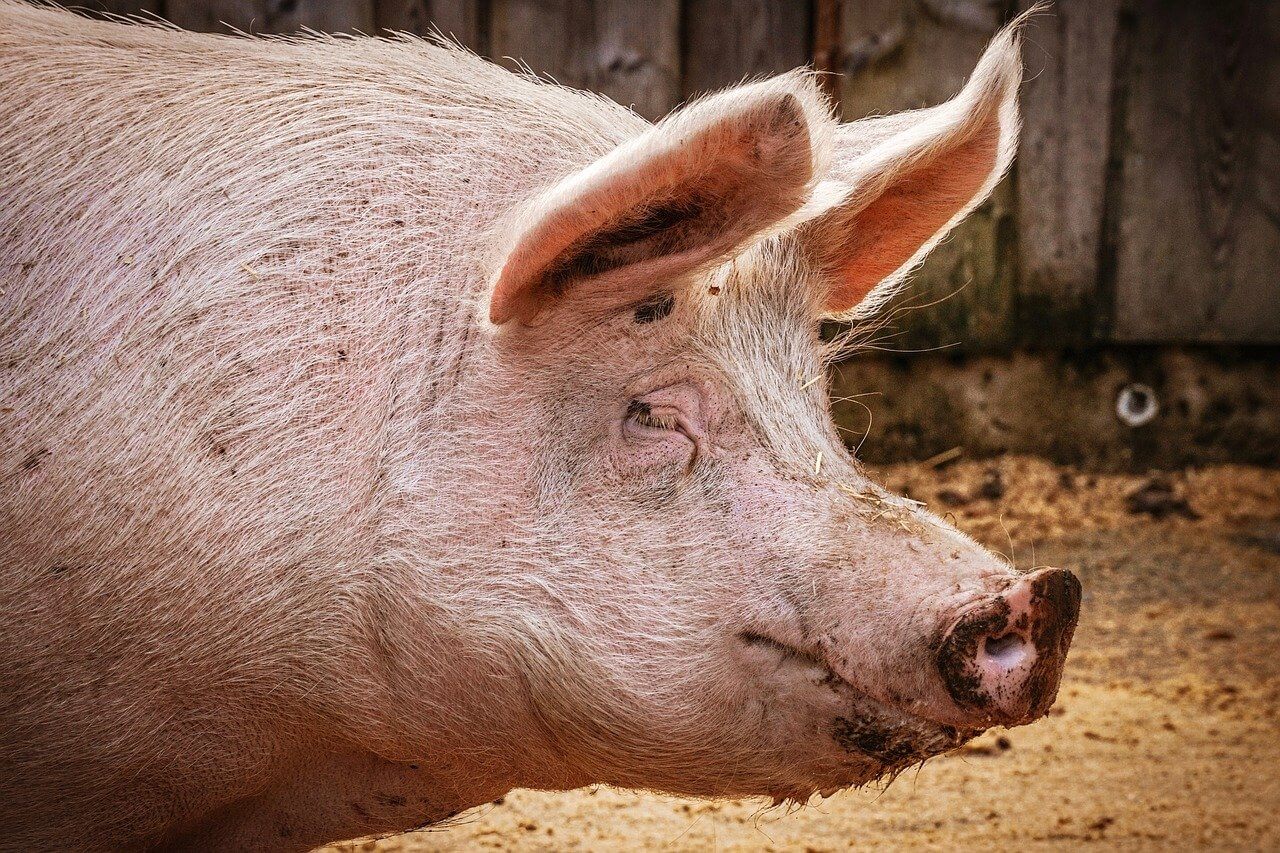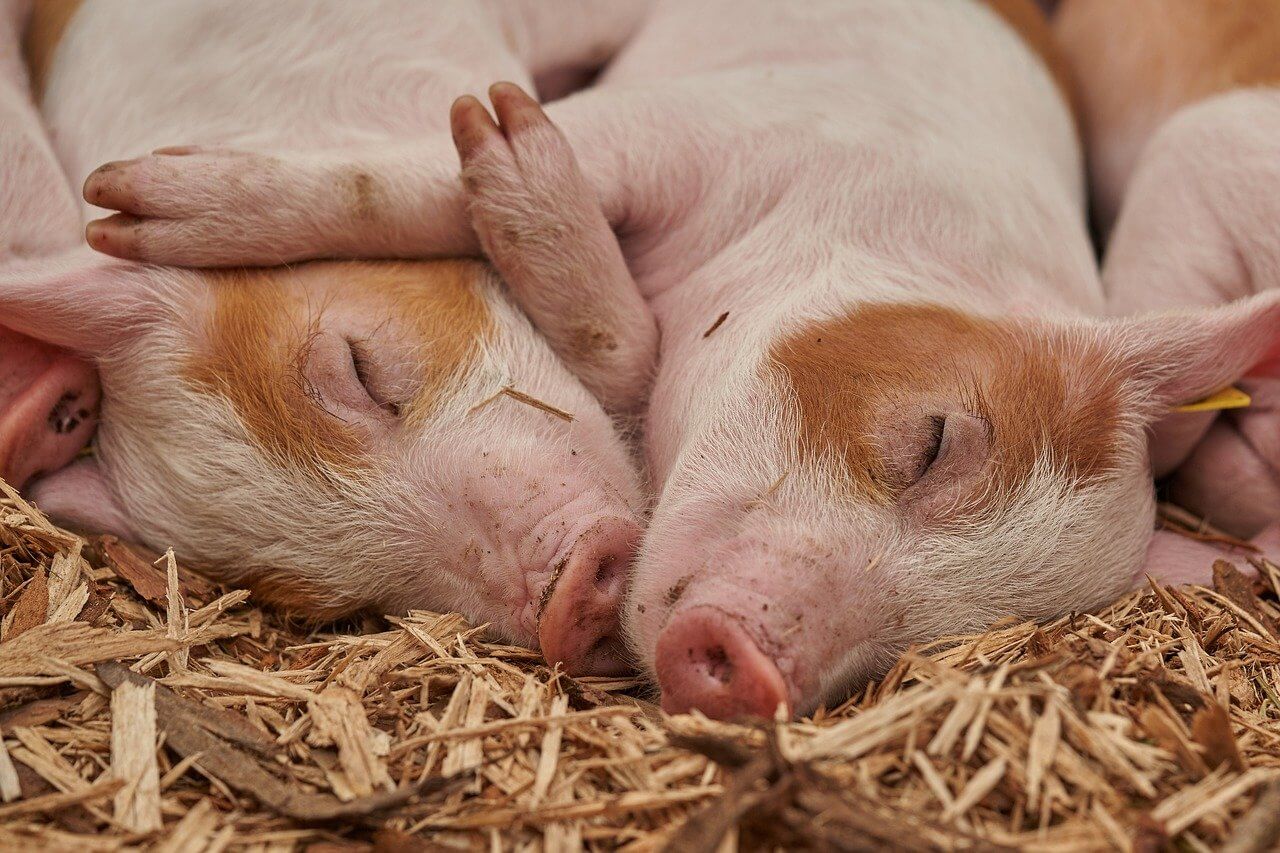Pigs are quite hardy and easy to keep healthy. They are omnivorous and enjoy commercial pig feed products as well as forage, garden and table scraps. Pigs put on weight quickly as long as they are well fed. In this article, we discuss what it takes to feed pigs successfully. Read on to learn more on how to feed pigs.
What You'll Learn Today
What To Feed Pigs

Pigs in the wild eat all sorts of things including:
- Fruits and Veggies
- Small Reptiles
- Grain Crops
- Rodents
- Carrion
- Roots
Pigs kept in captivity are typically fed:
- Barley
- Wheat
- Soy
These basic grains are usually mixed up with other items which may include kitchen scraps, yard and garden waste and the like.
How To Feed Pigs – For Beginners
How Often Do Pigs Need To Eat?
Pigs must always have access to some sort of feed or forage because they digest cellulose inefficiently. It’s also important to keep fresh water available at all times.
To keep food and water in front of pigs constantly, it’s a good idea to have a self-feeder in place along with an automatic water. Pigs’ drinking water should be separate from their mud wallow.
Investment in a good, automatic feed and watering system will pay off because pigs that are able to free feed and access clean water constantly gain weight far more efficiently than those that are fed once or twice a day.
What’s The Best Diet For Pigs?
Commercially available pig diets are specifically developed for maximum growth with minimum intake of feed. If you’re raising pigs to sell for meat, you’ll need to invest in a high quality commercial pig feed.
This will be a large expense for you, but it can’t be avoided. Even if you are raising free run, grass fed pigs, you’ll need to feed a great deal of high-protein pig feed to produce commercially desirable meat.
If you’re raising just one or two pigs for your own family’s meat needs, basic diet quality may not be your top priority.
Under these circumstances, your family pig may perform a valuable service to you by helping clear unwanted vegetation and converting kitchen and yard scraps into extremely useful fertilizer and tasty meat. Even so, you’ll want to feed some commercial pig feed, but it won’t be your pigs’ entire diet.
What to look for in a commercial pig feed
The best pig feeds for maximum weight gain should be very high in protein and have significant lysine content. Growing pigs need to have plenty of energy, and a high quality premixed ration is almost always recommended.
Throughout the pigs’ lifecycle, their nutrition needs will change. As pigs grow, their energy needs and amino acid needs also change.
At a weight of 50 pounds, shoats need a very high protein high lysine diet. Once your pig has attained a weight of 200 pounds, protein and lysine content can be reduced.
Is it really a good idea to feed pigs table scraps?
As mentioned, if you’re raising pigs for your own use, table scraps may make up a large part of the animals’ diet. Even so, you must exercise good judgment when choosing which scraps to give your pigs and which you should not.
Naturally, you do not want to feed your pig junk food. Additionally, you should not feed your pigs spoiled food, and there are some types of table scraps that can spread diseases to pigs such as African swine fever and Trichinella.
Even though pigs are omnivores, you should not feed them meat. This is especially true of raw meats because the risk for the spread of disease is quite high. If you are raising pigs for commercial meat production, you should handle all feed following recommended meat production food safety requirements.
Can pigs eat dairy products?
Surprisingly, even though pigs should not eat meat, milk is an excellent source of protein for meat producing pigs. If you end up with extra raw milk because of a heavily producing cow, you can give that milk to your pigs. They will enjoy it, and it will help produce very tender, tasty and healthy pork.
How Much Do Pigs Eat

The amount your pigs eat varies greatly dependent upon a wide variety of factors including:
- Age
- Gender
- Weight
- Temperature
Generally speaking, mature pigs like to be kept in temperatures ranging from 50°F to 70°F. When they are cool and comfortable, pigs weighing 150 pounds or more have good appetites and eat quite a bit of feed. If the temperature rises to above 70°F, most pigs will lose their appetite and also suffer loss of condition.
Piglets and shoats prefer to be kept a little bit warmer. If the temperature drops below 50°F, they will lose their appetites and suffer loss of condition.
Here is our guide with frequently asked questions about pigs.
What To Feed Baby Pigs At Weaning Time

Piglets need to stay with their mother for the first three weeks of life. During this time, they will thrive on their mother’s milk. When it’s time to wean a piglet, it’s a good idea to entice them with tasty appetizers such as a gruel made of ingredients such as:
- Fish Proteins
- Milk
- Oats
This sort of mixture is available commercially (Primistart) and has the advantage of also containing digestive enhancers, citric acid and flavors that are guaranteed to tempt hungry young pigs.
In addition to offering appetizing gruel, you can transition your young pigs to eating solid food by using a technique known as mat feeding. To do this, you’ll spread a little bit of commercial pig feed on mats or directly on clean flooring for the shoats to explore. This method encourages them to develop rooting behavior and to begin nibbling on solid food.
Even though we tend to think of pigs as being dirty, it’s important to understand that they should not eat from the dirt. Ingesting dirt is not a good thing. When you use the mat feeding technique, it’s best to use shallow mats with rims that limit the distance that the young pigs can push the food.
Without a rim, they’ll simply play with it and push it around. The rim encourages them to explore eating when they’ve reached the limit of the container.
It will take several days of mat feeding to transition from gruel feeding to solid feeding. Using mats with rims gets the young pigs used to eating their feed from a container or feeder. During this time, you should continue gruel feeding and offer mat feeding 2 or 3 times daily.
What To Feed Baby Pigs From A Nursery
If you acquire young pigs from a nursery and do not have their mother on hand, you may need to feed milk replacer. In this case, when the time comes to transition to gruel, you’ll want to include the milk replacer in the gruel. When you do this, feed small amounts multiple times daily. Milk replacer left out at room temperature can spoil quickly.
Formula raised pigs who are fed a gruel combination of milk replacer and dry feed can typically transition easily to a high quality commercial dry feed at weaning time. Even so, you may wish to transition them to their dry diet by pouring warm water or warm formula over the feed for the first few days of the transition.
Water Is Life!
At all phases of growth and feeding, remember that good hydration equals good health. Additionally, adding citric acid (vitamin C) to drinking water provides a tremendous boost to health. It helps reduce problems such as scouring and improves appetite.
The addition of a combination of plasma and lactose to drinking water is also beneficial. This is especially true for piglets who may be having trouble gaining weight. Addition of this solution also helps to stabilize growth rates across the board in all piglets.
Totally agree! Pigs simply eat everything we feed them.
Cool! Pigs who have unrestricted access to food and clean water acquire weight significantly more efficiently than those who are fed once or twice a day, thus investing in a decent, automatic feed and watering system will pay dividends.